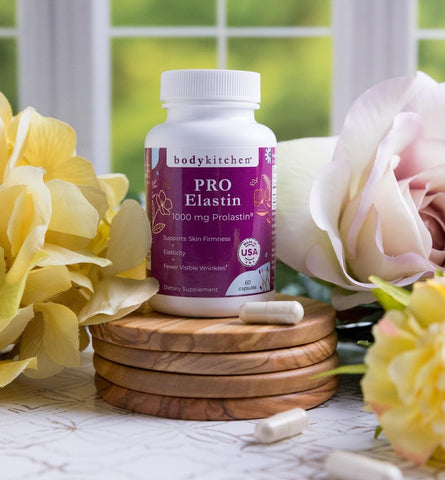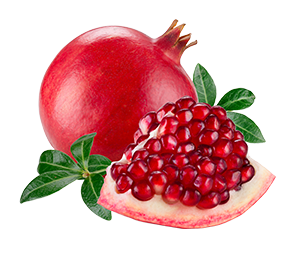Digging Into Joint Health for Maximum Outdoor Enjoyment
Remember the good ole days?
You know that idyllic period of life when our joints were so healthy and new that we mostly forgot we had any? Yeah, me neither.
Unfortunately, for the vast majority of adults, joints make us painfully aware of their existence from the moment we roll out of bed in the morning to when our head hits the pillow at night.
Joint pain runs rampant through the adult population, with 70% of adults experiencing joint pain across the spectrum of severity and 15 million adults diagnosed with full-blown arthritis.
But, what’s at the root of widespread joint pain?
Well, for starters, human physiology comes equipped with a considerable number of joints throughout, stretching from our toes to our neck.
Our knees, ankles, elbows, and shoulders immediately come to mind when discussing joints, but we possess far more than first meets the eye. In fact, the human body has upwards of 360 joints.
While enabling us to move in all sorts of practical and dynamic ways, each of these 360 joints also has the potential to break down over time. This erosion of joint health can result in limitations of movement and chronic pain, ultimately preventing us from living active, healthy lives.
After all, it only takes one joint going on the fritz to fundamentally alter our lifestyle and abilities.
So, as the spring season gives way to summer, let’s dig into joint health and support as we collectively spend more time outdoors and increase our activity.
What Causes Joint Pain?
Joints connect and allow movement between our bones. Joints use strong, connective tissues called tendons to integrate into the more extensive musculoskeletal system around them and cartilage to ensure smooth, frictionless movement between bones.
Joint pain, broadly speaking, is caused by an array of conditions, like arthritis (inflammation), osteoarthritis (degeneration), bursitis, tendonitis, injury, and infection.
The dividing lines between many of these joint conditions are blurred. For instance, an ankle injury that causes acute damage to a joint may heal in the short term. Still, that damage can surface down the road as osteoarthritis as the joint continues to degenerate naturally.
Furthermore, joint pain in one area forces us to overcompensate in another, raising the chances of further injury or aggravation. It’s no secret that joint pain can become a vicious cycle of inflammation, stiffness, pain, and incapacitation if not taken seriously.
The Pillars of Joint Health & Support
Instead of harping on the various types of joint pain, it’s much more helpful to dig straight into how to promote joint health within an active lifestyle.
The pillars of joint health and support may seem simple initially but integrating them into daily life is much easier said than done.
Flexibility
Joint flexibility refers to the degree to which joints can move and operate within their full range of motion. With flexibility comes blood flow, which nurtures and strengthens the cartilage, tendons, and muscles surrounding the joint.
A lack of flexibility, and thus a lack of blood flow, plays a large part in the breakdown of joint health over time.
Stiff muscles fatigue more rapidly than elongated, flexible ones, creating the conditions for overcompensation, inflammation, and injury.
Joint flexibility simultaneously extends range of motion, promotes blood flow, and strengthens the joint systems for reduced chances of injury.
So, how can you increase joint flexibility?
A stretching routine is crucial to joint health as we age, and our bodies take on more wear and tear. Choosing the right stretches for your routine will depend on which joints need the most support, but the important thing is to dedicate small chunks of time to daily stretching.
When it comes to stretching, compliance and consistency are everything.
Here are some tips for sticking to a stretching routine, long-term:
- Layer stretching into well-established habits.For example, if exercising is already a solidified part of your day, try stretching directly before or after every workout. Stacking habits on top of each other helps ingrain new habits. Plus, stacking habits is more time efficient.
- Set the bar low. You don’t have to stretch for 45 minutes to reap the benefits. For most, even five-to-ten minutes of daily stretching will drastically improve range of motion and overall joint health. Start with a few minutes and ramp it up from there.
- Choose quality over quantity. Stretching can be intimidating for the uninitiated. It’s uncomfortable when starting, and the sheer number of stretches available can make your head spin. Here’s the thing: you only need to do a few simple stretches well to see a difference.
- Make stretching active. Yoga and Pilates are great examples of active stretching because they require using your muscles to provide resistance. Active stretching exerts and strengthens joint-supporting muscles while stretching others, all while fostering enhanced blood flow.
Movement
Do you know the saying, “If you don’t use it, you lose it?”
While I don’t know for sure, I’m (somewhat) confident that whoever uttered that phrase was referring to joint health. If joints aren’t used and activated often, they atrophy and weaken. It’s that simple.
That’s why regular exercise and habitual movement are essential elements of joint health. Movement keeps joints limber and loose and builds muscle, energizes the body, strengthens bones, controls weight, and improves balance.
Movement can be aerobic, like walking, swimming, biking, water aerobics, running, walking up the stairs, or using an elliptical, to name a few.
Movement can also be related to enhancing the range of motion and strength of joints, like foam rolling, hanging from a bar, and weight training.
It doesn’t have to be high-intensity movement, either. It’s best to start moving at a gentle, measured pace. You can continually ratchet the effort and intensity as you build strength, flexibility, and endurance.
The point here is this:
It doesn’t matter how you move as long as you are moving regularly. Consistency is more important than intensity.
Eat Clean and Hydrate
Did you know that over 70% of the cartilage supporting your joints is made of water?
Staying hydrated fosters the production of synovial fluid, or joint fluid, which provides a protective layer of cushioning and lubrication between bones and joint cartilage.
Dr. Magdalena Cadet, MD, clinical rheumatologist, says that “when we drink water, we not only help stimulate the production of synovial fluid, but also help with cartilage regeneration and lubrication of the cartilage to reduce joint inflammation.”
And in a similar vein, an anti-inflammatory diet can also alleviate joint pain. Dietary inflammation can directly result in painful joint conditions like gout (accumulation of uric acid) and exacerbate arthritic conditions.
Keeping inflammation at bay through a cleaner diet can yield profound joint benefits. For starters, avoiding processed foods, artificial sugar, and alcohol will limit dietary inflammation.
Support Your Active Lifestyle with Joint Supplements
Joint supplements can play a significant role in reclaiming and maintaining joint health. Below, we lay out a few of our favorite joint supplements, but make sure you consult your doctor before trying them. Though generally safe, they can cause side effects, allergic reactions, and drug interactions in some people.
Boswellia Serrata Extract
Boswellia serrata is an herb that has long been used for religious ceremonies in India, North Africa, and the Middle East. It is also a traditional remedy for pain. Studies have found that Boswellia serrata has natural anti-inflammatory properties and may help lessen chronic inflammation.
Calcium Fructoborate
Calcium fructoborate is a natural substance found in fruits and vegetables and contains boron, which has been shown in studies to support a healthy inflammatory response.
Green-Lipped Mussel Extract
Green-lipped mussel is a type of shellfish native to New Zealand. While scientists are still investigating the link between joint health and green-lipped mussel extract, one theory is that the unique concentration of omega-3 fatty acids in the mussels affords its joint-protective and anti-inflammatory properties.
Luckily, if you’re interested in trying these joint pain supplements, Body Kitchen offers Pro Mobility, an all-in-one joint health solution. Give it a try today, so that you can get back outside tomorrow.














